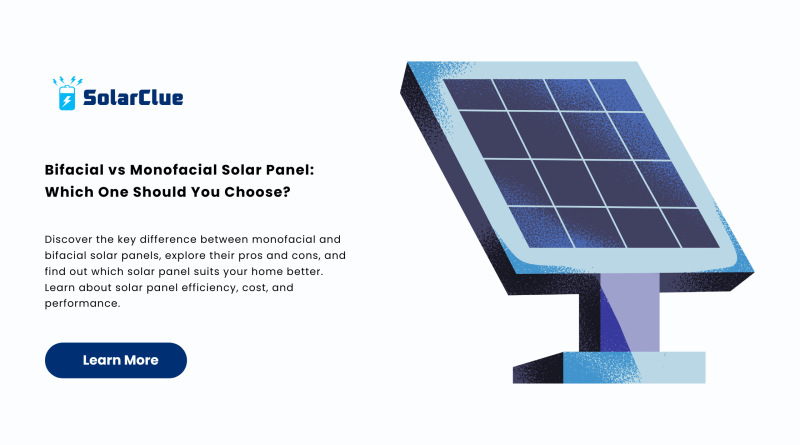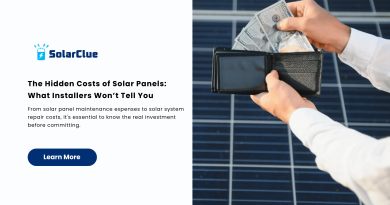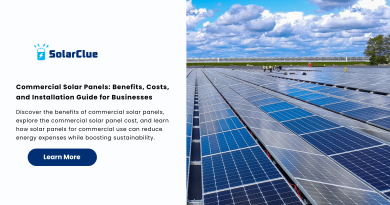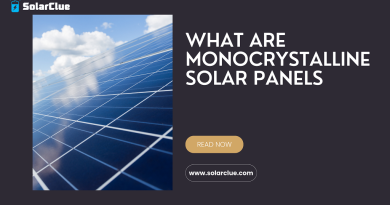Bifacial vs Monofacial Solar Panel: Which One Should You Choose?
With the rise in demand for renewable energy, understanding different types of solar panels is crucial. Homeowners and businesses alike are now evaluating the bifacial solar panel vs monofacial debate to determine which system provides better value, performance, and efficiency. But what are these panels, and how do they differ?
Table of Contents
- 1 What is a Monofacial Solar Panel?
- 2 What is a Bifacial Solar Panel?
- 3 Core Difference Between Monofacial and Bifacial Solar Panels
- 4 Solar Panel Efficiency: Which Type Wins?
- 5 Which Solar Panel is Best for Home?
- 6 Cost Comparison: Bifacial vs Monofacial
- 7 Installation Considerations
- 8 Environmental Impact
- 9 Durability and Maintenance
- 10 Real-World Applications
- 11 Which Solar Panel Offers Better ROI?
- 12 Conclusion: What Should You Choose?
- 13 FAQs
What is a Monofacial Solar Panel?
A monofacial solar panel is the traditional solar technology most people are familiar with. These panels absorb sunlight from one side—the top—which faces the sun. They have been in the market for decades and are widely used in residential and commercial solar installations.
Key Features of Monofacial Solar Panels
1. Single-side energy absorption
2. Lower cost compared to bifacial models
3. Proven and reliable performance
4. Ideal for rooftop solar setups
What is a Bifacial Solar Panel?
Unlike monofacial, a bifacial solar panel can absorb sunlight from both the front and back sides. This design allows them to harness reflected sunlight, increasing total energy output, especially when installed on reflective surfaces or with elevation.
Key Features of Bifacial Solar Panels
- Dual-side energy absorption
- Higher energy yield
- Ideal for ground-mounted or elevated systems
- Better performance in snowy or sandy areas
Core Difference Between Monofacial and Bifacial Solar Panels
Understanding the difference between monofacial and bifacial solar panels is essential for making an informed decision. The most notable difference lies in their design and performance. Bifacial solar panels capture more sunlight due to their dual-surface design, while monofacial solar panels are simpler and often more cost-effective.
Comparative Table
| Feature | Monofacial | Bifacial |
|---|---|---|
| Energy Absorption | Single-side | Dual-side |
| Installation Type | Rooftop | Ground-mounted, elevated |
| Cost | Lower | Higher |
| Output Efficiency | Standard | High |
Solar Panel Efficiency: Which Type Wins?
When comparing solar panel efficiency, bifacial solar panels usually outperform due to their ability to collect light from multiple angles. In ideal conditions, they can offer 10-20% more energy output than monofacial solar panels. However, the actual gain depends on factors like surface reflectivity and panel tilt.
Which Solar Panel is Best for Home?
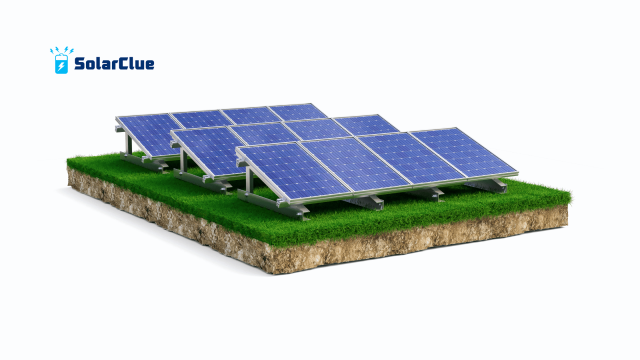
Choosing the best solar panel for home depends on your budget, space, and energy needs. If you have a traditional roof setup and a tighter budget, monofacial solar panels are a safe and proven option. On the other hand, if you have ground space and want maximum output, bifacial solar panels may be the better investment.
Cost Comparison: Bifacial vs Monofacial
While bifacial solar panels are more expensive upfront, they may offer better long-term returns due to higher energy generation. Monofacial solar panels are budget-friendly and sufficient for most household needs. Evaluating the total cost of ownership, including installation and maintenance, is key.
Installation Considerations
Bifacial solar panels perform best when elevated or installed over reflective surfaces like white gravel or snow. Monofacial solar panels can be flush-mounted to rooftops, making them ideal for urban installations where space is limited.
Environmental Impact
Both types contribute positively to reducing carbon emissions. However, the higher energy output of bifacial solar panels can mean a greater net environmental benefit over time.
Durability and Maintenance
Both monofacial and bifacial solar panels are built to last 25+ years. Maintenance requirements are similar, though bifacial panels might require more cleaning due to their double-sided surface.
Real-World Applications
Large-scale solar farms often use bifacial solar panels to maximize output per square foot. Residential setups mostly rely on monofacial solar panels due to ease of installation and lower initial costs.
Which Solar Panel Offers Better ROI?
For many homeowners, monofacial solar panels offer quicker ROI due to lower costs. However, in high-reflectivity environments, bifacial solar panels can outperform and become more cost-effective over the long term.
Conclusion: What Should You Choose?
The choice between bifacial solar panel vs monofacial comes down to your specific needs, location, and budget. Both have their strengths, and there’s no one-size-fits-all answer. Evaluate your space, sunlight exposure, and financial goals before deciding. You can learn more and explore top-quality products at SolarClue.com.
FAQs
1. Are bifacial solar panels more efficient than monofacial?
Yes, bifacial solar panels can be 10-20% more efficient under optimal conditions.
2. Can I install bifacial panels on my rooftop?
It’s possible, but they are most effective when installed above reflective surfaces or elevated from the ground.
3. Which panel is cheaper: bifacial or monofacial?
Monofacial solar panels are generally more affordable upfront compared to bifacial models.
4. How long do solar panels last?
Both types typically last 25 years or more with proper maintenance.
5. Where can I learn more about solar options for my home?
Visit our blog at blog.solarclue.com for expert insights and the latest trends in solar energy.
Curious to see how solar can transform your energy savings? Head over to SolarClue.com and start your solar journey today with confidence and clarity!

